 | Charles William Hackley - Algebra - 1846 - 542 pages
...VIII., -=~ ; and hence, subtracting these equal acbd quantities from unity, or 6 d a—6 c—d XII. If four quantities be proportionals, the sum of the first and second trill have to Oieir difference tfie same ratio that the sum of the third and fourth hat to their difference.... | |
 | Euclid, Robert Potts - Euclid's Elements - 1847 - 118 pages
...similar triangles it may be proved that of any three of the consecutive circles, the sum of the radii of the first and second, is to their difference, as the sum of the radii of the second and third, is to their difference. HINTS, &c. TO THE THEOREMS. BOOK VI. 3. THIS... | |
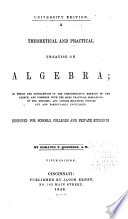 | Horatio Nelson Robinson - Algebra - 1848 - 354 pages
...b : : c : c — a. or a : b — a : : c : d — c. (Theorem 4.) Jf four magnitudes be proportional, the sum of the first and second is to their difference, as the sum of the third and fourth i* to their difference. Admitting that a : b : : c : d , we are to prove that a+6 : a — b : : c+rf... | |
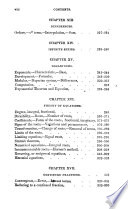 | Stephen Chase - Algebra - 1849 - 348 pages
...compound, hence componendo, by compounding. (o) Lat., from divide, to separate; by separating. Hence, Cor. The sum of the first and second is to their difference, as the sum of the third and fourth is to their difference. Thus 3:2 = 6:4; .-. 3+2 : 3—2 = 6+4 : 6—4. Hence (J§ 234-236), § 237.... | |
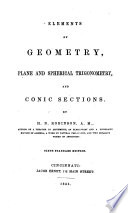 | Horatio Nelson Robinson - Conic sections - 1854 - 350 pages
...C—D Or . . A:B— A: : C:D— C. THEOREM 9. If four magnitudes be proportional, the sum of thefirsl and second is to their difference, as the sum of the third and fourth is to their difference. Admitting that . A : B : : C : D, we are to prove that A+B : A—B : : C+D... | |
 | James William M'Gauley - 1854 - 284 pages
...means, ac — ad=ac — be ad=be 24. We may mix : and, then, " the sum of the first and second terms is to their difference, as the sum of the third and fourth is to their difference." a:b: :C:d Mixing, a-\-b:a — b: :c-\-d:C—d Multiplying extremes, and means,... | |
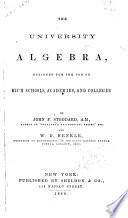 | John Fair Stoddard, William Downs Henkle - Algebra - 1859 - 538 pages
...student prove this. PROPOSITION (393.) 12. When four quantities are in proportion, the sum of the ßrst and second is to their difference as the sum of the third and fourth is to their difference. DEMONSTRATION. Let a : b : : с : d. We are to prove that a + b : a—b : :... | |
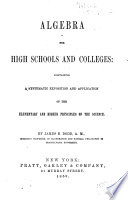 | James B. Dodd - Algebra - 1859 - 368 pages
...v :: w : x : y : z. THEOREM XIII. (163.) The sum of the first, and second terms in any Proportion, is to their difference, as the sum of the third and fourth is to their difference. Let a : b : : x : y, then is a-\-b : a — b : : x-\-y : x — y. By Composition... | |
 | Joseph Allen Galbraith - Optics - 1860 - 94 pages
...radius of the mirror, this relation becomes r:: alternmdo (Euc. V. 16) — A + |r : A- |r :: and since the sum of the first and second is to their difference as the sum of the third and fourth is to their difference, we have, componendo et dividendo (Euc. V. 1 7, 18), ^& : r : : r : ^8, or,... | |
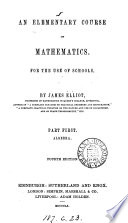 | James Elliot - 1860 - 252 pages
...proportions that can be obtained by this theorem and its corollaries. THEOREM VII. When four Quantities are proportionals, the Sum of the first and second is to their Difference as the Sum of the tlurd and fourth to their Difference, DEM. If a : b : : c : d, then, by Th. 6, Cor. 2, a + b : a :... | |
| |